By Will Dabbs, M.D.
The AR-15 rifle is one of the most versatile devices ever contrived by man. Customizing this basic chassis lets you create everything from a souped up handgun to a long-distance counter-moose tool. With this basic raw material American mechanical artisans have conjured some of the most fascinating stuff.
Mankind’s history has been defined by a relentless drive to push the boundaries. This indomitable engine has brought us everything from toilet paper on rolls to robots on Mars. While most revolutionary discoveries have led to transformational improvements in fields like communication, transportation and food production, sometimes the outcome is a bit murkier.
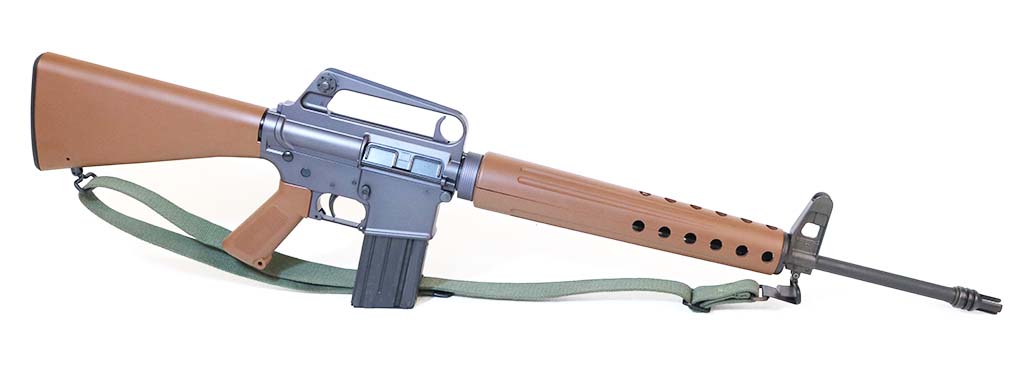

What the Heck …
On December 2, 1942, a team of anxious physicists gathered underneath the bleachers at the University of Chicago football stadium and stared intently at a massive stack of 45,000 ultra-pure graphite blocks. Enrico Fermi, the leader of this merry band, later described the contraption as “a crude pile of black bricks and wooden timbers.” Oriented within this giant cube were some 50 short tons of marginally-refined uranium. They had christened this monstrosity CP-1, short for “Chicago Pile-1.” These guys stood poised to light up the world’s first nuclear reactor.
Never before in the history of the planet had there been a self-sustaining fission reaction. They hoped that by raising and lowering control rods that absorbed excess neutrons they could meter the reactor’s power output. However, all the math was theoretical. Their contingency plan was a scientist named Samuel Allison positioned high above the machine. He planned to dump a big bucket of concentrated cadmium nitrate on top and run should things get out of hand.
At 3:25 in the afternoon CP-1 came to life. The reactor ran for 4.5 minutes and produced half a watt of power. The scientists celebrated with a bottle of Chianti drunk from paper cups.
Fermi had purportedly calculated there to be a 15% chance that once the reaction was begun it would self-propagate and consume the reactor, Stagg Field, Chicago, North America and the entire planet before transforming the Earth into a miniature sun. Firm in this knowledge, they tried it anyway. Science marches on.

This no-frills AR pistol was a home workshop project. My Ghost Gunner finished out the receiver. The parts kit was just dirt cheap. Some of the most striking innovations in the black rifle market orbit around the unprecedented availability of these low-cost parts.
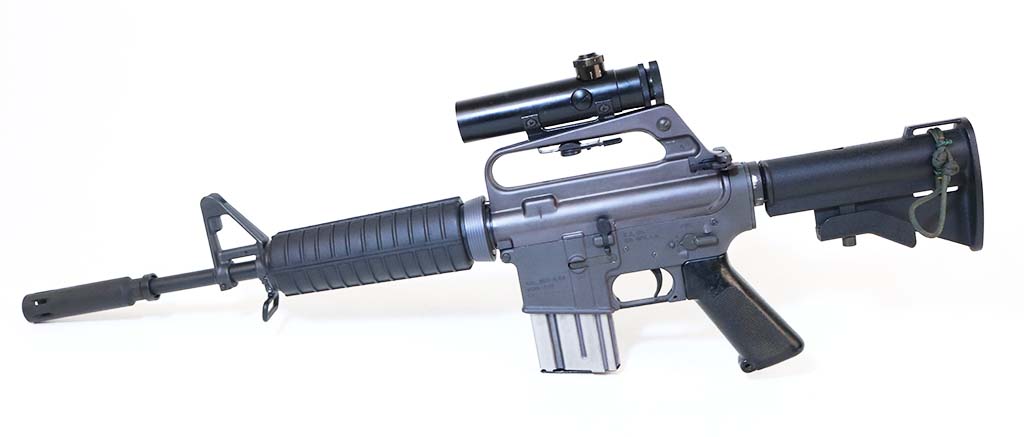
The Vietnam-era XM177E2 was the transitional form between yesterday’s M16 and today’s M4 Carbine.
Evolutionary Changes
Contrary to the whimpering screed of gun control advocates, advances in black rifle technology never quite threatened to obliterate all life on earth. However, they did turn these remarkable space-age rifles into something their designers might never have imagined. Visionaries like Reed Knight, Randy Luth and Alex Bosco drove the evolution. The veritable cornucopia of black rifle options we enjoy today all blossomed from some common progenitors.
Something clicked in the 1990s, and American civilian shooters developed an insatiable appetite for these rifles. Today there are three times as many firearms in the hands of American civilians than are possessed by all the world’s militaries combined. ‘Murica!
While left-wing gun control fanatics might look at those numbers and swoon, more durable folk saw an untapped market. Capitalism is the impetus that best drives human endeavor. Once folks realized there was money in it, the market for new and innovative ditzels for Gene Stoner’s archetypal black rifle simply exploded.
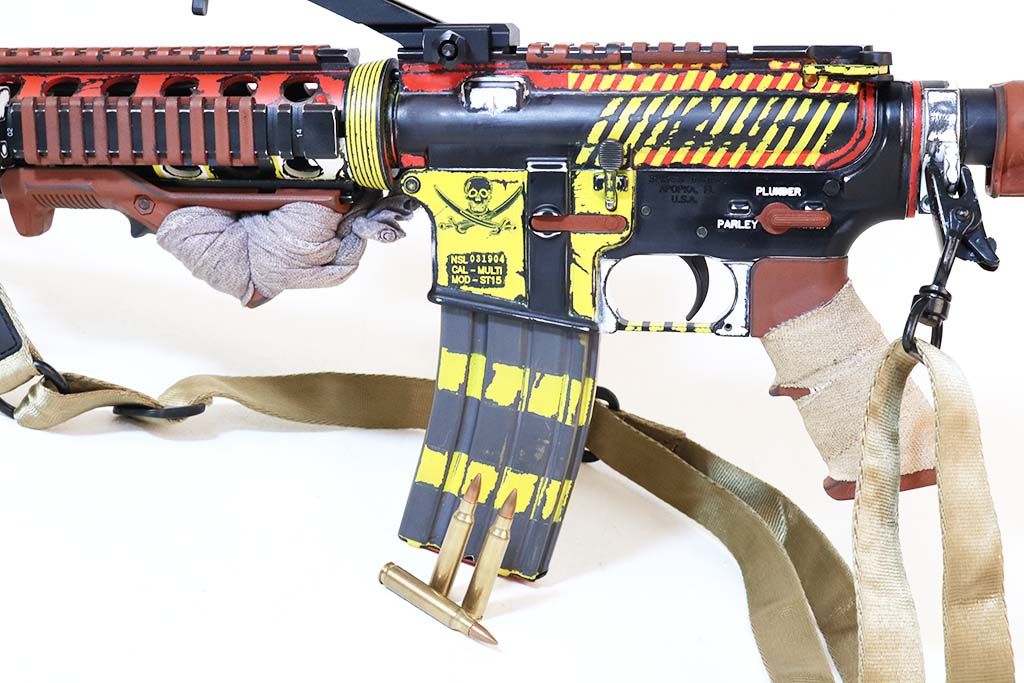
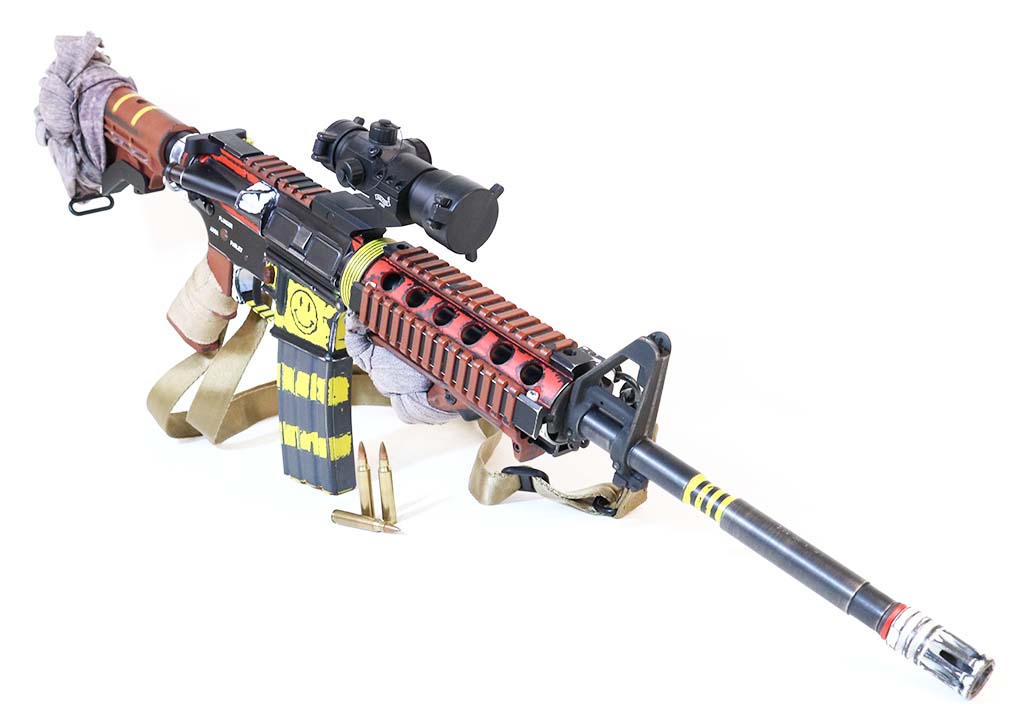
This outlandish AR-15 was a homeschool project I built with my kids. They finished the gun out using bake-on engine block paint from the local auto parts store to make it resemble something from their video games.
Worst Year Ever
You might have noticed that 2020 was a bit different from most of its previous counterparts. A global pandemic synergistically melded with Protesters Behaving Badly to drive the American gun market to unprecedented heights. In about 3 months the United States gained some two million new first-time gun owners. Wow.
Throughout the summer of 2020 gun shops were as a result fairly picked over. Gun companies that would typically launch new and innovative products instead poured all of their energies into production. In many cases the particular black rifle you got was whatever you were lucky enough to find. Regardless, the state of the art as we wind up 2020 is still pretty fascinating.
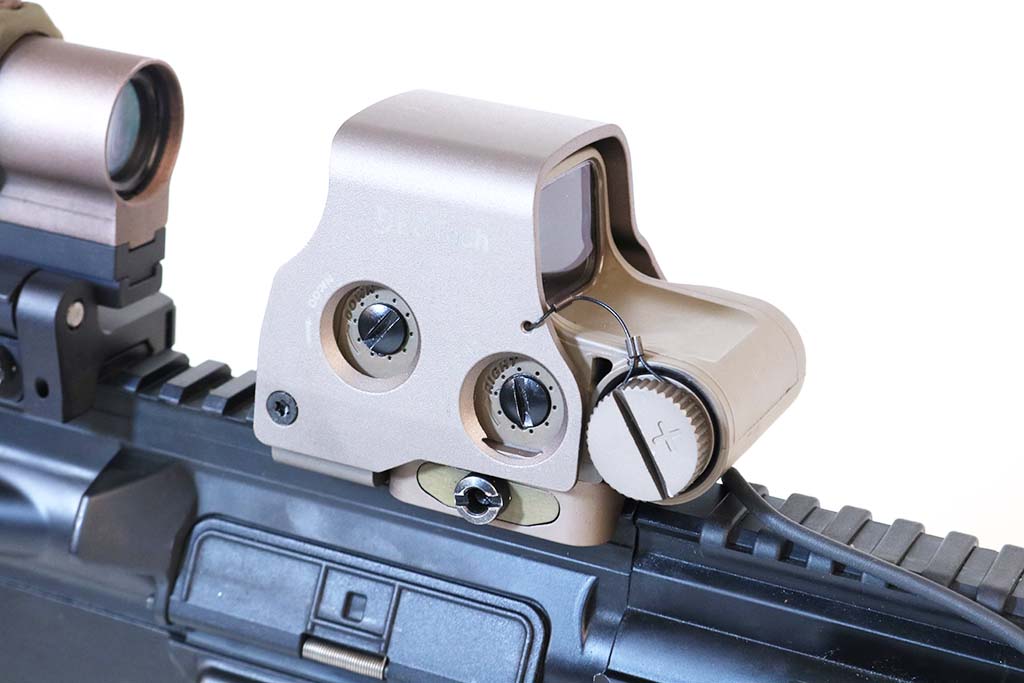
The EOTech Holosight was the first truly successful holographic gunsight. The angry end of a Holosight was the last thing Osama bin Laden saw before queuing up for his 72 dark-eyed virgins.
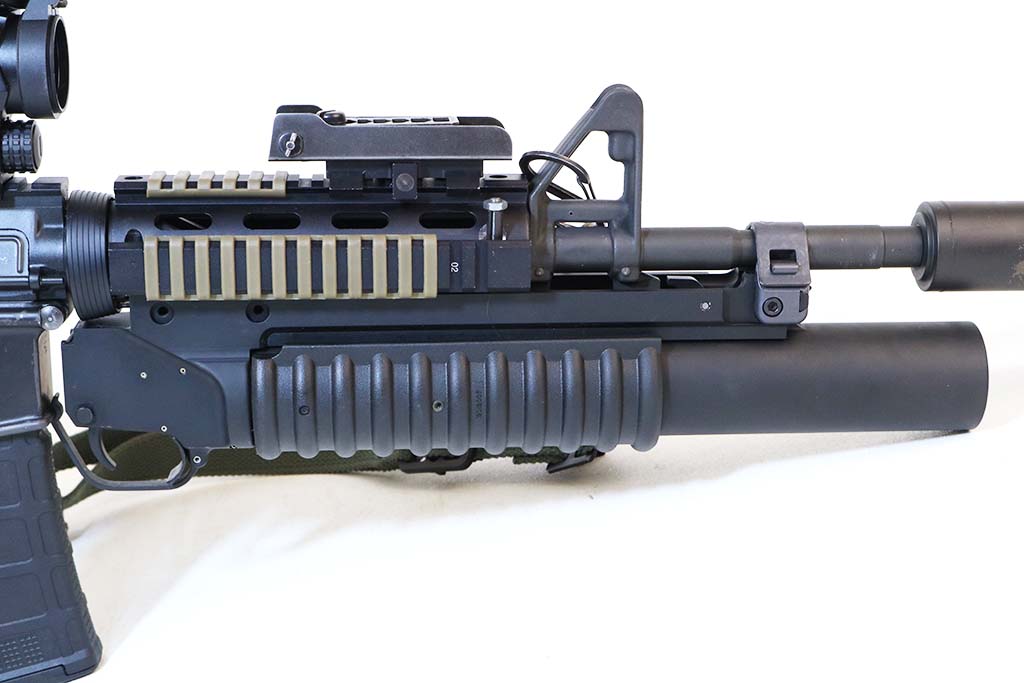
Nowadays, you can’t eat at the cool kids’ table at the local range if you don’t have rails sprouting all over your favorite black rifle. There are countless options at countless price points.
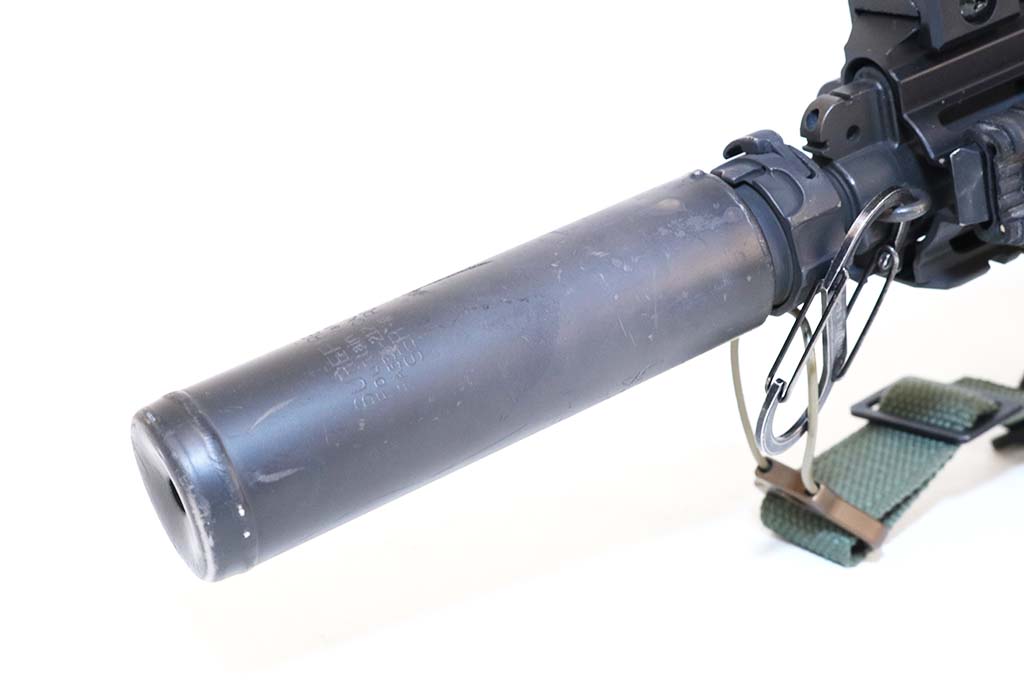
Two hundred dollars isn’t the impediment today that it was in 1934. As a result, sound suppressors clutter up American gun ranges these days but in a good way.
Sparkly Stuff
Advances in microelectronics have fundamentally changed most everything about life on earth. Nowadays I can retrieve a device the size of a pack of cigarettes from my pocket and have a pleasant conversation with somebody in Norway. (Smoking kills 478,000 Americans per year. Never, ever smoke. It is the stupidest thing human beings have literally ever done.) That same technology brings myriad targeting devices to a railed upper receiver near you.
The EOTech® Holosight introduced the American shooter to the same holographic technology used in the Heads-Up Displays of modern fighter planes (eotechinc.com). The Meprolight™ Foresight takes this same basic tech and adds a digital datalink to your smartphone (meprolight.com). The end result includes a heads-up digital compass, the capacity to use one sight on up to 10 different weapons and a pending shot counter.
Streamlight® makes flashlights the size of my thumb that mount onto a forearm rail and are massively more capable than those portly D-cell Maglights® of generations past (streamlight.com). Their TLR™ RM 2 is about the size of a roll of LifeSavers yet produces a full 1,000 lumens of blistering white light. Built-in laser designators like the TLR-8® G keep you on target in hard dark.
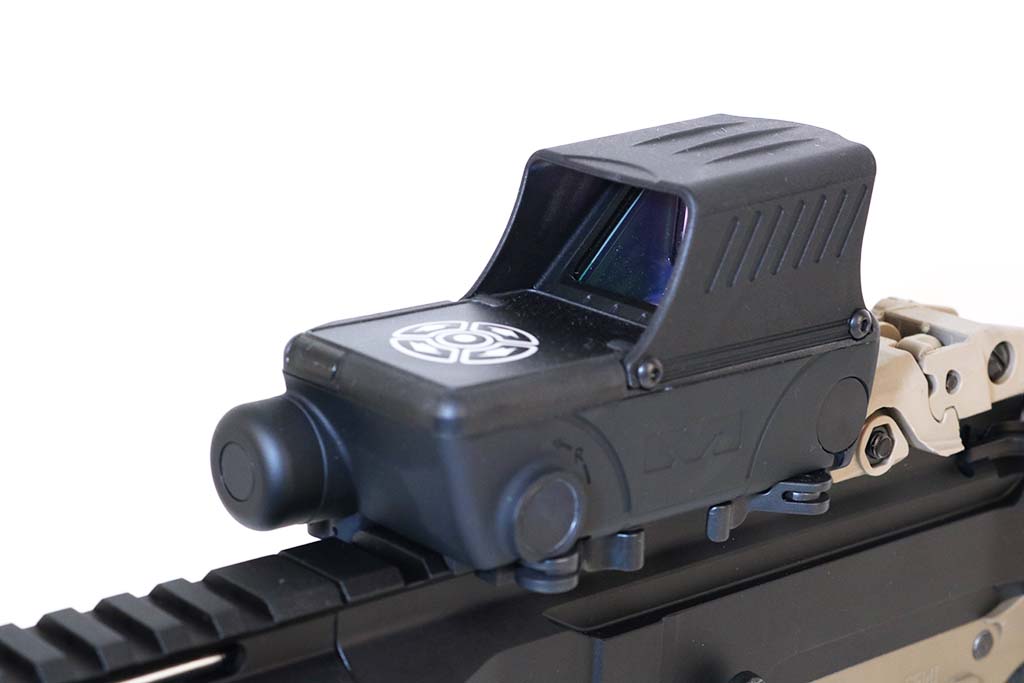
The Game Changer
The biggest innovation in the gun world in a generation was Alex Bosco’s Pistol Stabilizing Brace (PSB). Ever since 1934 any barrel less than 16 inches had to either be mounted on a gun without a stock or required an onerous tax stamp. The PSB changed all that.
The PSB was originally intended to assist disabled shooters in running an AR-style rifle one-handed. After a great deal of legal gymnastics the ATF ruled that the addition of a PSB to a short-barreled firearm did not change its pistol classification. A further ruling allowed said weapon to be legally fired from the shoulder. Our little world would never be the same.
Nowadays tidy little rifle-caliber handguns like the Springfield Armory SAINT® Edge PDW pack unprecedented capabilities yet still transfer as Title 1 firearms (springfield-armory.com). PSBs come in dozens of different configurations. Many models fit standard M4 buffer tubes and are reasonably priced.

DIY Firepower
Be patient and you can still find the parts to make an AR at home at a reasonable cost. Down here in the Deep South if you haven’t built a tricked-out AR with your daughter by the time she leaves for college it can be considered child neglect. If you’re smart enough to run a screwdriver, you can pull it off. Should you get frustrated, there is always the miracle of YouTube.
The term Ghost Gun strikes fear in the hearts of the less durable among us, but building your own AR at home is actually the world’s purest expression of freedom. Parts are cheaper than completed rifles, and finishing out an 80% receiver at home is great fun. According to federal law, so long as you build the gun for personal use and not for resale you don’t even have to mark it with a serial number.
The Ghost Gunner from Defense Distributed is a home CNC milling machine about the size of a fish tank that attaches to your computer and finishes out 80% receivers (ghostgunner.net). The newest version makes AR-10s, AR-15s, 1911s, AKs and GLOCK clones. You can do something similar to an AR lower with a drill press, a jig and a router, but it’s not nearly so professional or half as cool.
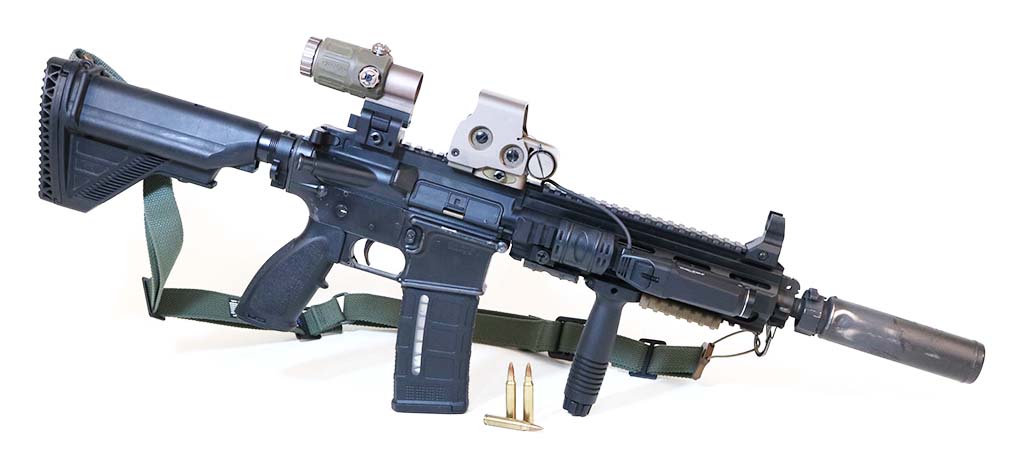
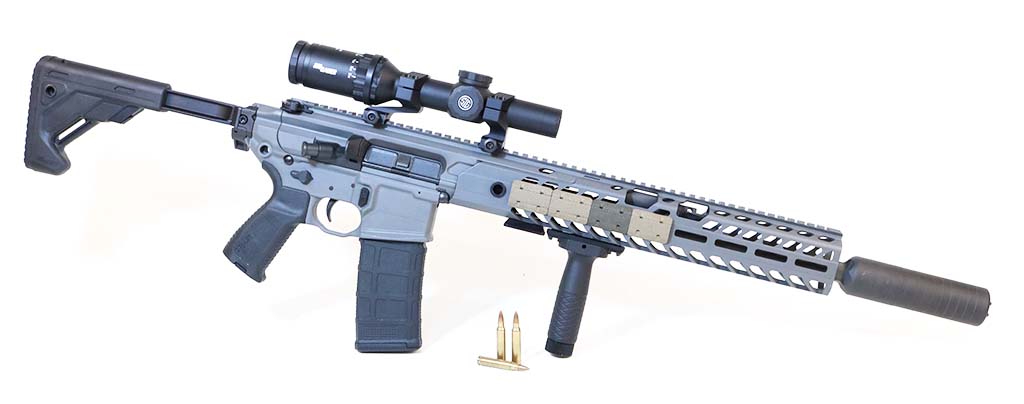
Denouement
I’m typing these words some 6 weeks before the presidential election. For gun owners the outcome of this contest will determine the trajectory of American gun rights for the rest of time. By the time you read this it should all be settled. Lord help us.
Today civilian black rifle innovations drive advances in both military and law enforcement applications and vice versa. What the future holds is a bit cloudy at this point. I can say, however, that Gene Stoner’s 1950s-era black rifle has blazed an unprecedented trail of tactical innovation that shows no sign of slowing down.

The Ghost Gunner 3 from Defense Distributed is a desktop, home CNC milling machine that will finish out scads of different 80% firearms.
DEFENSE DISTRIBUTED
| This article first appeared in Small Arms Review V25N2 (February 2021) |












